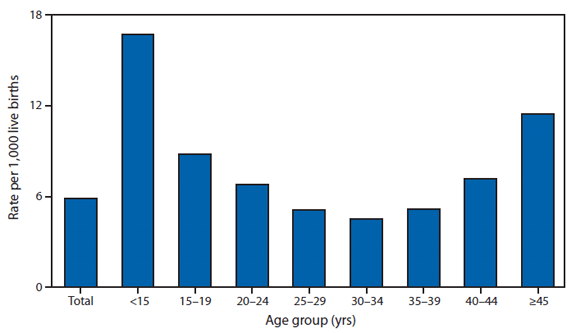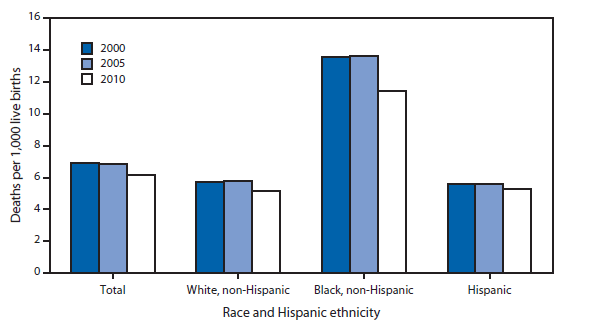The United States has a much higher infant mortality rate than other developed countries; why is this, and is there anything we can do?
October 11, 2016
It has been widely reported that the United States has a relatively high infant mortality rate compared with other developed countries: More than 23,000 American infants died in 2014, or about 6 for every 1,000 live births, putting us on par with countries like Serbia and Malaysia. Most other developed countries—as geographically diverse as Japan, Finland, Australia and Israel—have lower rates, closer to 2 or 3 deaths out of every 1,000. However, carefully parsing out the data shows that the story is more complicated than those simple statistics.
Explaining the numbers
The first nuance is one of definition. Infant mortality is defined as the death of babies under the age of one year, but some of the differences between countries can be explained by a difference in how we count. Is a baby born weighing less than a pound and after only 21 weeks’ gestation actually “born?” In some countries, the answer is no, and those births would be counted as stillbirths. In the United States, on the other hand, despite these premature babies’ relatively low odds of survival, they would be considered born—thus counting toward the country’s infant mortality rates.
These premature births are the biggest factor in explaining the United States’ high infant mortality rate. Pre-term births can have many different maternal causes, many of which—such as high blood pressure, diabetes, Zika and other infections and age—are not entirely within an expectant mother’s control. Other factors, such as stress level, might be able to be managed, but are not entirely controllable. On the other hand, some controllable risk factors include the use of tobacco, alcohol, cocaine and other drugs. The major issue of the lack of universal access to quality prenatal care should also be considered in any discussion of preterm births and infant mortality. Also, because about 50 percent of pregnancies in the United States are unplanned, some women might not be aware they are pregnant in time to get early prenatal care, and this may be part of the reason for premature births in this country.
Across all categories, larger, heavier babies and those at later gestational ages tend to have better survival rates. “Still, at any given gestational age, American physicians are just as capable—if not more so—as other health care professionals around the world at expertly caring for premature neonates,” said Mark Sicilio, MD, an assistant professor of pediatrics at the Texas A&M College of Medicine.
Infertility treatments, which often lead to twins or triplets (who have poorer survival rates, perhaps primarily because they are likelier to be premature), have also been blamed for infant mortality numbers.
Or perhaps the blame for infant deaths lies in some sort of pollutant, virus or other toxin causing birth defects? Although these may be factors, and a major Zika outbreak causing miscarriages and microcephaly wouldn’t help the United States’ numbers, these are not currently the primary documented causes either.
The widening gap
Generally, especially compared to the worldwide statistics, American babies have good survival rates in their first few weeks of life. It is only after they reach one month of age that differences between the United States and other developed countries start to widen.
Perhaps not surprisingly, babies born to wealthier and better educated parents in the United States tended to fare about as well as infants born in European countries. On the other hand, those babies born to mothers in the United States without these advantages were more likely to die than any other group, even similarly disadvantaged populations in the other countries.
This might be due in large part to the prevalence of unintentional injuries and sudden infant death syndrome (SIDS) among American babies. Many parents are still not following sleep recommendations to prevent SIDS. More than 20 percent of babies in the United States are still not being put on their backs—the safest position—to sleep.
“It is extremely important that parents put their babies to sleep safely, on their backs in a crib with a firm mattress and no blankets, stuffed animals or pillows,” Sicilio said. “Studies have also shown an increased risk of SIDS with bed-sharing, or even allowing the infant to fall asleep on a sofa or chair with an adult. Further, allowing infants to remain asleep in car seats or strollers after arriving at their destinations is also discouraged.”
There are racial and ethnic differences in infant mortality that might help explain the differences between the United States and Europe. For example, African American and American Indian/Alaska Native babies are at higher risk of SIDS than Caucasian, Hispanic or Asian American babies. As most other developed countries have a comparatively small population with African heritage (and very few people of American Indian descent) these statistics might also help explain the numbers. Still, they probably don’t tell the whole story.
“Much research has been done on other SIDS environmental risk and protective factors,” Sicilio said. “Using a pacifier, for example, seems to decrease the risk of SIDS, perhaps because sucking on it keeps part of the brain stimulated even during sleep.”
Benefits of home nurse visits
Social programs in many European countries that provide free home visits from nurses for new parents might help increase protective factors and decrease risky ones. The nurses can give the baby a checkup, but perhaps more importantly, they can provide advice for preventing SIDS and can inspect the home for possible hazards. Although some of these home-visit programs exist in the United States, they are not nearly as widespread as they are in other countries.
“We have considerable research evidence of the beneficial effects of home nurse visits for new moms, with special emphasis on the health benefits to their children,” said Lisako McKyer, PhD, associate dean for climate and diversity and associate professor at the Texas A&M School of Public Health. “For example, research reveals that infants in homes which experienced regular visits from nurses and similar paraprofessionals had better psychological outcomes for both mother and infant, which means lower health care costs over the course of their lives.”
Part of the answer for different mortality rates may also lie in differing breast-feeding rates. Some European countries, especially those in Central Europe, have higher rates of babies being exclusively breastfed for the first six months of their lives. “As the Academy of Pediatrics says, breast is best,” Sicilio emphasizes.
Home nurse visits may be beneficial here as well, as studies have shown that they are linked to higher breastfeeding rates. Home nurse visits also seem to be very important to the most vulnerable segments of society, including teen mothers and those coping with addiction or other problems. “Visits to the vulnerable were especially valuable,” McKyer said. “They help to ameliorate the effects of other stressors on new moms and their infants and tend to result in safer home environments for children.”
These safer homes translate to less money spent on treating sick and injured infants, which is especially important considering the cost of care for the rest of the baby’s life. “We can invest a few hundred dollars on the front-end during the first year of babies’ lives to save about $1 million over the course of each of their lifetimes,” McKyer added. “Home nurse visits are also linked to reductions in emergency room visits within the first 10 days of a baby’s life from jaundice and/or dehydration, compared to infants who did not receive home nurse visits.”
In the end, more research is needed to determine how these and other factors really do help explain differences in infant deaths between the United States and other developed countries. For example, could the more generous parental leave policies of Europe help save infants’ lives? Research seems to indicate that maternity leave does reduce infant mortality rates, but the exact mechanism is unclear. It is possible that at least part of the reason is a disproportionally high rate of SIDS cases in child care settings.
“Parental leave policies have tremendous influence on health outcomes for both mom and baby, as well as long-term economic impact,” McKyer said. “Studies show that in countries where there is a generous parental leave policy, there are tremendous effects on morbidity and mortality rates of infants and young children. They’re considerably less likely to get sick enough to require hospitalization or to die. Again, it’s investing on the front end so that we’re not paying on the back end.” This work leads to other questions about how we might be able to bring American infant mortality rates more in line with other developed counties.
“We need to close the infant mortality gap in the United States,” Sicilio said. “I believe we are equipped to do just that.”
https://vitalrecord.tamhsc.edu/american-infant-mortality-rates-high/




